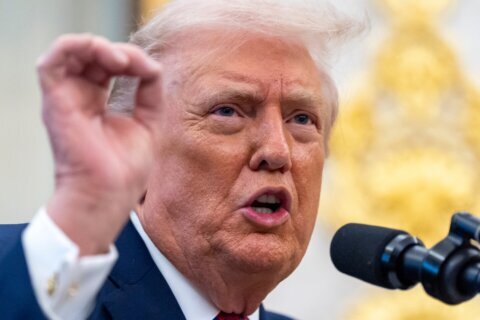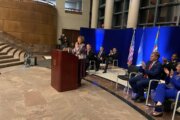Sure, you may have written a check to pay your monthly rent or give a $50 gift to your niece. But do you understand what each part of a check means and its purpose?
While paper checks are not as popular as a payment method as they used to be, it’s still important to know what’s on the front and back of a check you’re writing or cashing.
Here’s our illustrated guide to every part of a check. First, let’s review what’s normally on the front of a check.
[IMAGE]
1. Name and Address
At the top-left of a check, you should see the name and address of the person, company or organization that owns the bank account tied to the check. It might look something like this:
John Jones123 Main St.
Small Town, Tennessee 37000
2. Date
The upper-right corner has a space for the writer of the check to jot down the date the check is written.
[Read: Best Checking Accounts.]
3. Check Number
Above the date, the upper-right corner has a three- or four-digit check number, like 200. The check numbers follow a sequence. The first check in your checkbook might be 200, followed by 201, 202 and so forth.
4. Pay to the Order of
This line — on the left side of the check and below the name and address — is reserved for the name of the person or organization being paid by the writer of the check. In other words, the writer is authorizing that person or organization to cash the check. You might, for example, write a rent check to USA Apartment Co. Inc.
[Read: Best Savings Accounts.]
5. Dollar Amount of Check in Numerals
To the right of the “pay to the order of” line is a box (preceded by a dollar sign) for indicating the dollar amount of the check. For instance, you might write the numerals 900 in the box to reflect that you’re paying $900 to USA Apartment Co. Inc.
6. Dollar Amount of Check in Words and Numerals
In the center of the check, stretching from the left side to the right side, is a line where you write the dollar amount of the check in words and numerals. Cents are indicated by writing a fraction out of 100. The word “dollars” is then printed at the end of this line.
Here’s what that might look like if the amount of the check is $55.50:
Fifty-five and 50/100 dollars
You’d then draw a line from “dollars” to the right to fill up any unused space.
The FDIC says it’s best to make sure there is no room to write anything else on this line. Another thing to know, is that, according to the FDIC, if the amount of the check written in numbers does not match the amount written in words, financial institutions will generally use the amount written in words.
7. Padlock Symbol
Next to the word “dollars” you’ll likely see a padlock icon. This indicates that extra security features have been incorporated into the check. These features are designed to combat check fraud and make it harder to change or reproduce the check.
8. Bank Name
The bank’s name, city and ZIP code typically appears below the space where you write the dollar amount in words and numerals. For example:
ZYX BankSmall Town, Tennessee 37000
Note that the name of the bank might not always show up in this spot. It might be printed elsewhere on the front of the check. Also, the bank’s city and ZIP code might not accompany the name.
9. Memo Line
Below the bank ID is a line for the check writer to write information related to the purpose of the check. The line is preceded by the word “for” or “memo.”
Your financial institution doesn’t require that you fill out the memo line, but it can be helpful for your own records. Sometimes the payee requests that the memo be filled out, like a utility company requesting that you list your account number.
10. Signature
To the right of the memo line is where an authorized person signs the check. So, if John Jones is writing a rent check to his landlord, he’d sign his name here. If the check is from another person or an organization, this is where the authorized signature would go.
11. Routing Number
The bottom-left area of the check features a series of numbers: the routing number, account number and check number.
The first set of numbers is the nine-digit routing number. It identifies the financial institution connected to the account holder.
For example, if John Jones is writing a check from his checking account at ZYX Bank, the routing number — hypothetically 000111222 — would identify ZYX Bank as the financial institution issuing the check.
Each financial institution is assigned its own routing number.
12. Account Number
After the routing number comes the account number for the person or organization that wrote the check. This number is usually eight to 12 digits. For example, John Jones’ unique account number at ZYX Bank might look like this: 111122223333. You’ll need both the routing number and account number to set up direct deposits and automated payments for yourself.
13. Check Number
The final set of digits after the routing number and account number is the check number. So, the identification of the No. 200 check from John Jones’ account would appear as: 0200.
The FDIC notes that not all checks repeat the check number here.
Now that you understand the front, let’s move on to the back of the check:
[IMAGE]
14. Endorsement Space
First up is the endorsement space. This is where the recipient of the check signs her name and writes or stamps the words “For deposit only.” The words “For deposit only” might be followed by the name of the bank where the check is being deposited.
In this space, there may be a box or line that says, “Endorse here.” Another line might instruct the endorser not to “write, stamp or sign below this line.”
A recipient endorses a check before depositing or cashing it.
15. Mobile Deposit Checkbox
Some checks now include a checkbox that, if marked by the endorser, indicates the check is being deposited via a mobile device.
However, checking that box doesn’t fulfill a new banking regulation regarding mobile deposits. The words “For mobile deposit only” should accompany the signature in the endorsement area or the deposit might be rejected.
16. Security Box
The security box on the back of the check lists the check’s security features. The box is designed to educate the check issuer and recipient as well as discourage check fraud.
17. Security Screen
This space, often dominated by the words “original document” in the middle of the check, is reserved for financial institutions. Financial institutions use this area to detail the steps they’ve taken to process a check.
Neither a check writer nor a check recipient should write or stamp anything here.
More from U.S. News
How to Set Up Direct Deposit at Your Bank
How to Transfer Money From One Bank to Another
Guide to Every Part of a Check originally appeared on usnews.com
Update 12/04/25: This story was previously published at an earlier date and has been updated with new information.






